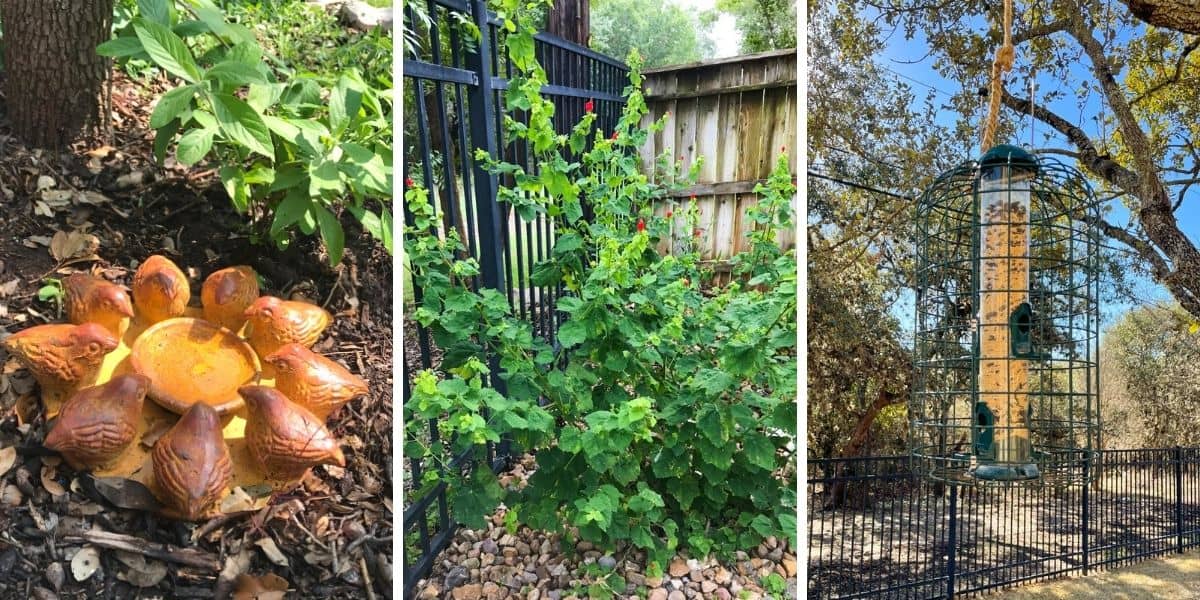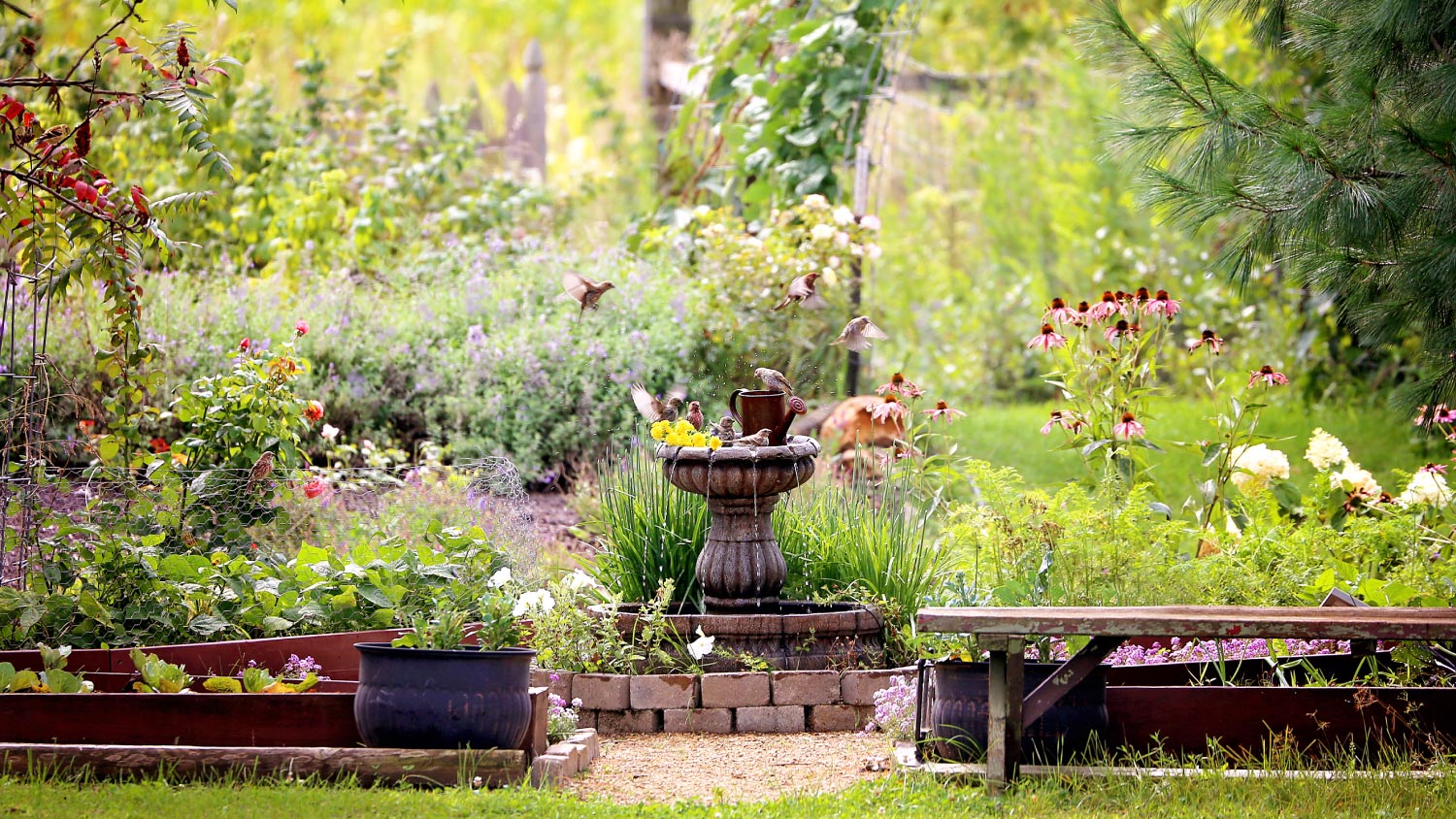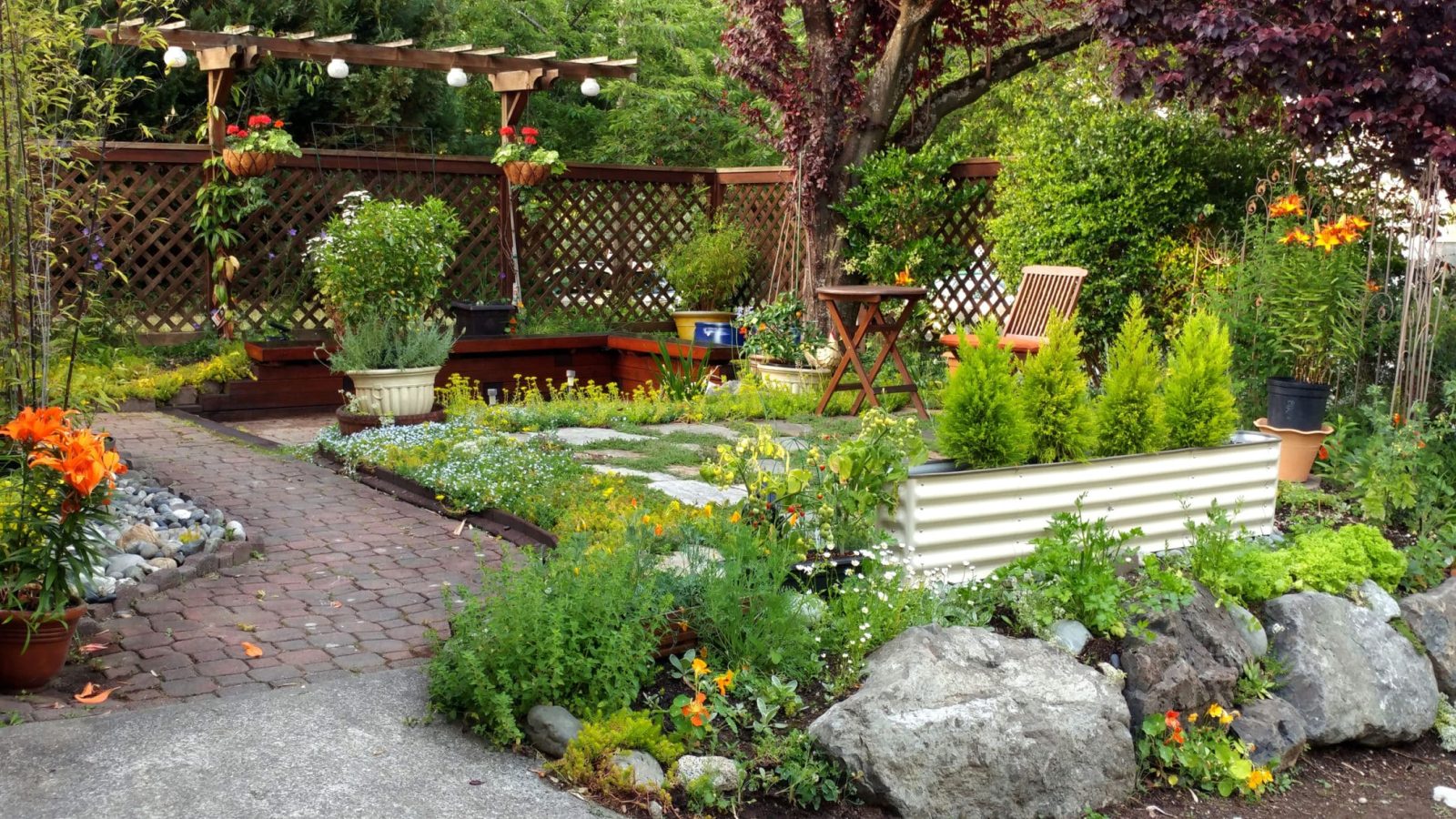The Importance of Backyard Wildlife Habitats

Imagine a world teeming with life, where vibrant birds flit through the branches, butterflies dance among colorful blooms, and gentle hummingbirds sip nectar from delicate flowers. This isn't just a scene from a nature documentary; it's a reality we can create in our own backyards. By fostering a thriving wildlife habitat, we not only enhance the beauty of our surroundings but also contribute to a healthier planet.
Benefits for Wildlife and Humans
Creating a backyard wildlife habitat brings numerous benefits, enriching the lives of both wildlife and humans. It provides a safe haven for animals, offering food, water, and shelter, which is especially crucial in urban and suburban areas where natural habitats are increasingly fragmented. A thriving wildlife habitat can attract a diverse array of species, from the majestic monarch butterfly to the industrious honeybee, enriching our daily lives with their presence.
Ecological Roles of Wildlife Species
Every species plays a vital role in maintaining the delicate balance of our ecosystem. Birds, for example, act as natural pest control, consuming insects that can damage crops and gardens. Pollinators, such as bees and butterflies, are essential for the reproduction of many plants, ensuring the continuation of food sources for both wildlife and humans. Even seemingly insignificant creatures, like earthworms, contribute to soil health by breaking down organic matter and improving aeration, benefiting plant growth.
Supporting Biodiversity and Conservation
Backyard habitats can contribute to broader conservation efforts by providing a safe haven for endangered or threatened species. For instance, planting native milkweed in your garden can support monarch butterfly populations, which are facing significant declines due to habitat loss and pesticide use. By creating a mosaic of diverse habitats, we can help ensure the survival of a wide range of species and contribute to the preservation of biodiversity, which is crucial for a healthy and resilient ecosystem.
Choosing Plants and Trees

Creating a thriving wildlife habitat in your backyard requires careful consideration of the plants and trees you choose. The right selection will provide essential resources like food, shelter, and nesting opportunities for various species, making your garden a haven for local wildlife.
Benefits of Native Plants
Planting native species is crucial for attracting local wildlife. Native plants have evolved alongside local insects, birds, and mammals, forming a complex web of interdependence. They provide the specific food sources, nesting materials, and shelter that these animals require for survival. Non-native plants, on the other hand, may not offer the same benefits and can even disrupt the delicate balance of the local ecosystem.
Creating Water Sources
Water is essential for all living creatures, and wildlife is no exception. Providing a reliable source of clean water in your backyard can attract a wide variety of animals, from birds and butterflies to squirrels and deer. A well-designed water source can be a valuable addition to your wildlife habitat.
Types of Water Sources
There are many different ways to provide water for wildlife. The most important factor is to offer a variety of options to suit different needs.
- Shallow Ponds: Shallow ponds are a great way to attract a variety of wildlife, including amphibians, reptiles, and birds. They provide a place for animals to drink, bathe, and cool off. When designing a shallow pond, consider its size, depth, and shape. A pond that is too deep can be dangerous for small animals, while a pond that is too shallow can dry out quickly. The shape of the pond should also be considered, as a more natural shape will attract more wildlife.
- Birdbaths: Birdbaths are a popular way to attract birds to your backyard. They should be shallow enough for birds to easily access the water. Birdbaths should be cleaned regularly to prevent the growth of algae and bacteria. A birdbath with a shallow, sloping edge is ideal for birds to easily enter and exit.
- Drip Systems: Drip systems are a simple and effective way to provide water for wildlife. They can be used to create a small puddle or a continuous stream of water. Drip systems are particularly useful for attracting hummingbirds and other small birds.
Maintaining Water Sources
Maintaining water sources is essential for keeping them clean and safe for wildlife.
- Cleanliness: Water sources should be cleaned regularly to prevent the growth of algae, bacteria, and other contaminants. This is particularly important for birdbaths, which can become breeding grounds for mosquitoes.
- Mosquito Control: Mosquitoes can breed in stagnant water, so it is important to take steps to prevent them from multiplying in your water sources. This can be done by adding mosquito dunks, which contain a natural bacteria that kills mosquito larvae. Changing the water regularly and ensuring the water source is free of debris can also help reduce mosquito breeding.
- Freezing: During the winter, water sources can freeze over, making them inaccessible to wildlife. To prevent this, consider using a submersible heater to keep the water open. You can also add a few rocks or pebbles to the water source, which will help to break up the ice and keep the water open.
"Providing a reliable source of clean water is a crucial step in creating a thriving wildlife habitat."
Providing Shelter and Nesting Sites: Building A Backyard Wildlife Habitat
Wildlife needs more than just food and water to thrive. They also need safe and secure places to rest, raise their young, and escape from predators. Providing shelter and nesting sites in your backyard can significantly contribute to the diversity and abundance of wildlife in your area.
Nesting Boxes for Birds, Building a backyard wildlife habitat
Nesting boxes offer a safe and secure place for birds to raise their young, especially in areas where natural cavities are limited.
- Consider the bird species: Different bird species have varying nesting requirements. Some prefer open cavities, while others need more enclosed spaces. Research the specific needs of the birds you want to attract to choose the appropriate box size, entrance hole diameter, and placement. For example, a bluebird box will have a smaller entrance hole than a chickadee box.
- Placement: Locate nesting boxes in a safe and secluded location, away from predators and potential disturbances. Ensure the box is mounted at the appropriate height for the bird species. A bluebird box should be placed at least 5 feet off the ground, while a chickadee box can be placed as low as 3 feet.
- Materials: Nesting boxes can be constructed from various materials, such as wood, metal, or plastic. Wood is the most common and provides insulation and protection from the elements. Ensure the material is untreated and free of harmful chemicals.
- Maintenance: Clean out nesting boxes after each breeding season to prevent the spread of parasites and diseases. Replace old or damaged boxes to ensure they remain safe and effective.
Providing Shelter for Small Mammals and Reptiles
Brush piles, rock piles, and log piles create valuable shelter for a variety of small mammals and reptiles.
- Brush Piles: These provide cover and nesting sites for rabbits, squirrels, and other small mammals. They also attract insects, providing a food source for birds and other wildlife. Create a brush pile by gathering branches, leaves, and other debris from your yard and piling them together in a secluded area.
- Rock Piles: Rock piles provide shelter for snakes, lizards, and other reptiles. They also offer a place for insects and spiders to live, attracting insectivores like birds and frogs. Choose rocks of various sizes and shapes and pile them together in a sunny location.
- Log Piles: Log piles provide shelter for a variety of animals, including snakes, salamanders, and insects. They also create a habitat for fungi and other decomposers, which are essential for a healthy ecosystem. Gather logs of different sizes and stack them in a shady location.
Designing and Placing Nesting Boxes
When designing and placing nesting boxes, consider the following:
- Entrance Hole Size: The entrance hole should be large enough for the target bird species to enter but small enough to deter larger birds or predators. A 1.5-inch diameter hole is suitable for bluebirds, while a 1-inch hole is ideal for chickadees.
- Placement Height: The nesting box should be placed at the appropriate height for the bird species. Bluebirds prefer boxes placed at least 5 feet off the ground, while chickadees can nest in boxes as low as 3 feet.
- Predator Protection: Place the nesting box in a location that offers some protection from predators, such as a dense shrub or a tree with branches that obscure the entrance.
- Drainage: Ensure the nesting box has adequate drainage to prevent water from accumulating inside, which can create a breeding ground for insects and mold.
Feeding Wildlife

Providing food for wildlife can be a rewarding way to connect with nature and support local ecosystems. However, it's essential to approach feeding with careful consideration, understanding the potential benefits and risks involved.
Ethical Considerations and Potential Risks
Feeding wildlife can be a controversial topic, with both ethical and ecological considerations. While it can seem like a benevolent act, it's crucial to remember that wild animals are adapted to survive on their own, and providing supplemental food can disrupt their natural behaviors and potentially lead to negative consequences.
One significant concern is the potential for wildlife to become dependent on human-provided food sources. This dependency can lead to a decline in natural foraging skills and an increased reliance on humans for survival. Additionally, feeding wildlife can attract unwanted species, such as rodents and pests, which can pose risks to human health and property.
Another crucial factor is the potential for disease transmission. Feeding wildlife can increase the likelihood of disease spread, as animals congregate in close proximity to access food. This can be particularly problematic for species that are susceptible to diseases, such as birds.
Selecting Appropriate Food Sources
When choosing food sources for wildlife, it's essential to prioritize natural options that are safe and beneficial.
Here are some general guidelines:
* Focus on natural foods: Offer food sources that are naturally found in the wildlife's habitat. This helps ensure they receive the nutrients they need and avoids introducing potentially harmful substances.
* Avoid processed foods: Processed foods, such as bread, chips, and sugary snacks, lack nutritional value and can be harmful to wildlife. These foods can cause digestive problems, obesity, and other health issues.
* Consider seasonal availability: Offer food sources that are available naturally during specific seasons. This helps mimic the natural food cycle and prevents animals from becoming overly reliant on human-provided food.
* Provide a variety of food sources: Offer a diverse range of foods to meet the nutritional needs of different wildlife species.
Table of Food Sources for Wildlife
The following table showcases a variety of food sources for different wildlife species, including their nutritional value and seasonal availability.
| Wildlife Species | Food Sources | Nutritional Value | Seasonal Availability |
|---|---|---|---|
| Birds | Seeds, fruits, nuts, suet, mealworms | High in protein, fats, and vitamins | Year-round, with variations based on species |
| Squirrels | Nuts, seeds, fruits, acorns | High in protein, fats, and carbohydrates | Fall and winter |
| Deer | Grasses, herbs, shrubs, acorns, fruits | High in fiber, protein, and minerals | Year-round, with variations based on species |
| Rabbits | Grasses, herbs, clover, dandelions | High in fiber, protein, and vitamins | Year-round |
| Butterflies | Nectar from flowers | High in sugars and carbohydrates | Spring and summer |
It's essential to consult reliable resources, such as local wildlife organizations or state wildlife agencies, for specific guidance on appropriate food sources for the wildlife in your area.
Maintaining Your Backyard Habitat
A thriving wildlife habitat doesn't just happen overnight; it requires ongoing care and attention. Just like a garden needs tending, your backyard habitat needs regular maintenance to ensure it remains a haven for your feathered and furry friends. This involves a combination of routine tasks, proactive monitoring, and strategic interventions.
Creating a Maintenance Schedule
Regular maintenance is crucial for keeping your habitat healthy and attractive to wildlife. A well-structured schedule helps you stay on top of tasks and ensures your habitat remains a welcoming sanctuary.
- Pruning: Regular pruning helps maintain the health of your plants and trees, promoting new growth and preventing overcrowding. It also helps to ensure that your habitat remains open and accessible for wildlife.
- Weeding: Weeds compete with native plants for resources, potentially harming the health of your habitat. Regular weeding ensures your native plants thrive, providing essential food and shelter for wildlife.
- Replenishing Food and Water Sources: Wildlife rely on consistent access to food and water, especially during harsh weather conditions. Regularly replenishing feeders and birdbaths ensures a continuous supply of essential resources.
- Seasonal Maintenance: Different seasons bring different needs for your habitat. For example, fall is a time for cleaning up fallen leaves and debris, while spring calls for preparing nesting sites and planting new vegetation.
Monitoring Habitat Health
A healthy habitat is a dynamic ecosystem, constantly evolving. Regular monitoring helps you identify potential problems or imbalances and take corrective action.
- Observe Wildlife Activity: Pay attention to the types and numbers of wildlife visiting your habitat. A decline in species or activity could indicate a problem.
- Inspect Plants and Trees: Check for signs of disease, pests, or damage. Early detection can help prevent widespread issues.
- Assess Water Sources: Ensure water sources remain clean and accessible. Look for signs of contamination or stagnation.
- Monitor Soil Health: Healthy soil is essential for supporting plant life. Consider conducting soil tests to identify any nutrient deficiencies or imbalances.
Managing Invasive Species
Invasive species are plants or animals that are not native to a particular region and can outcompete native species, disrupting the delicate balance of your habitat.
- Early Detection: Identifying invasive species early is key to preventing their spread. Regularly inspect your habitat for unfamiliar plants or animals.
- Manual Removal: For small infestations, manual removal can be effective. Carefully pull or dig up invasive plants, ensuring you remove the entire root system.
- Chemical Control: In some cases, chemical control may be necessary. Always use herbicides or pesticides cautiously and follow label instructions carefully.
- Biological Control: Introducing natural predators or parasites can help control invasive populations. This approach requires careful planning and research to ensure it doesn't harm native species.
Managing Wildlife Populations
While it's wonderful to attract wildlife to your backyard, it's important to manage populations to ensure the health of your habitat and the well-being of the animals.
- Limit Feeding: While providing food is helpful, overfeeding can lead to overcrowding and disease. Consider offering food only during certain seasons or when natural resources are scarce.
- Provide Natural Food Sources: Encouraging a diversity of native plants provides natural food sources for wildlife, reducing reliance on artificial feeders.
- Limit Nesting Sites: Providing too many nesting sites can lead to competition and stress among wildlife. Offer a limited number of suitable nesting boxes or cavities.
- Contact Wildlife Professionals: If you encounter a large or aggressive wildlife population, contact a wildlife professional for advice and assistance.
Top FAQs
Building a backyard wildlife habitat - How do I keep my habitat safe from predators?
While predators are a natural part of the ecosystem, you can minimize risks by providing safe nesting boxes, strategically placing feeders away from dense cover, and ensuring that your water sources are easily accessible without attracting unwanted attention.
What if I have a small backyard?
Even a small space can be transformed into a haven for wildlife. Focus on native plants that attract pollinators and small mammals, create a small water feature, and consider a vertical garden to maximize space.
Can I attract specific types of wildlife?
Absolutely! Research the needs of your desired species and tailor your habitat accordingly. For example, hummingbirds love brightly colored flowers, while butterflies are attracted to nectar-rich plants.
What about pests?
While attracting wildlife can sometimes lead to pest issues, a balanced ecosystem naturally controls pest populations. Encourage beneficial insects, like ladybugs, and consider using organic pest control methods.
